This article explains how to enable or disable a network adapter in Windows 11.
Windows allows users to reset, rename, or turn off network adapters. A network adapter, known as a Network Interface Controller (NIC), enables the computer to connect to a network.
A network adapter is required to connect to a Wi-Fi or Wired Network. For example, a wireless adapter will connect to a wireless network, and a wired adapter will connect to a wired network.
Whichever adapter you have installed on your Windows computer, disabling it can be done with a few clicks, and the steps below show you how to do that.
How to disable or enable a network adapter in Windows 11 via the Settings app
As mentioned above, one can turn off a network adapter in Windows with a few clicks. If you ever want to turn off a network adapter in Windows 11, the steps below should be handy.
Windows 11 has a centralized location for the majority of its settings. As a result, everything can be done, from system configurations to creating new users and updating Windows from its Settings app.
To get to System Settings, you can use the Windows key + I shortcut or click on Start ==> Settings, as shown in the image below:

Alternatively, you can use the search box on the taskbar to search for Settings. Then select to open it.
In Windows Settings, click Network & internet tile to expand it.
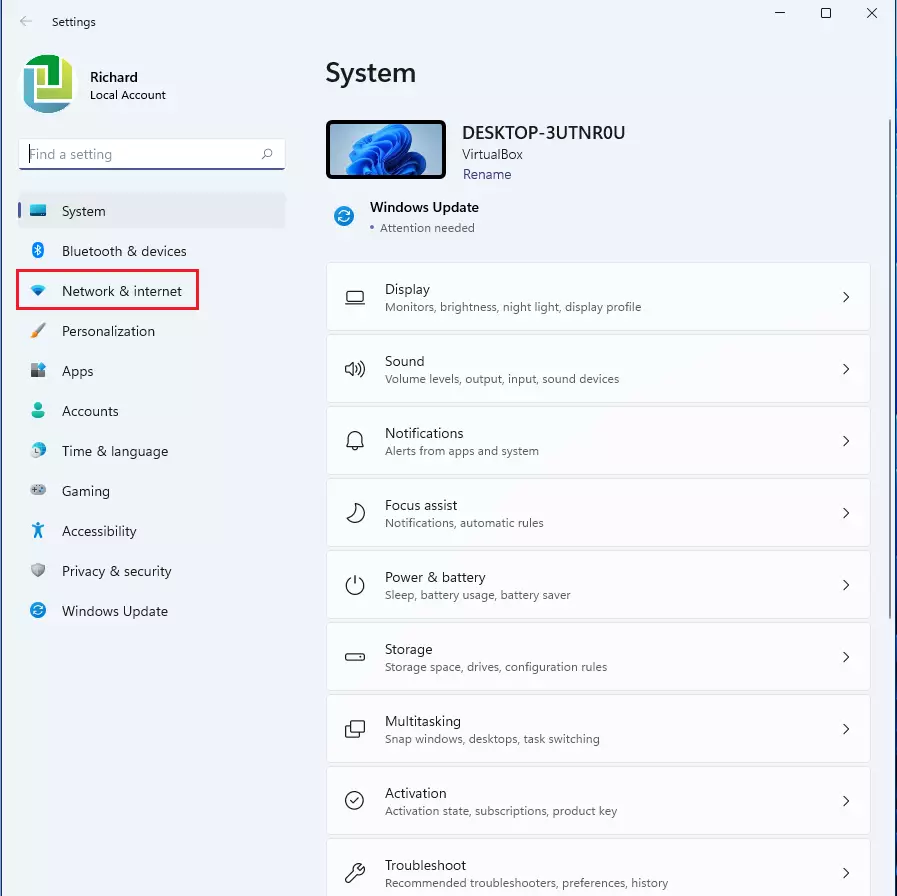
On the Network & internet settings pane, select the Advanced network settings tile at the bottom to expand it.
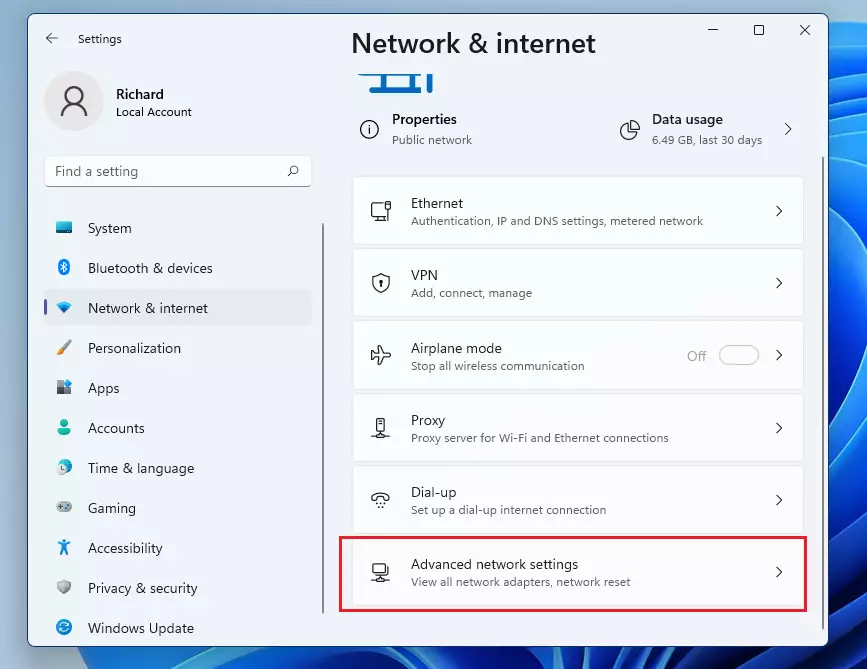
On the Advanced network settings pane, under Network adapters, select the network adapter name you want to disable. Then click the Disable button, as shown below, to turn off the network adapter.
Do this to all the adapters you want to disable in Windows.
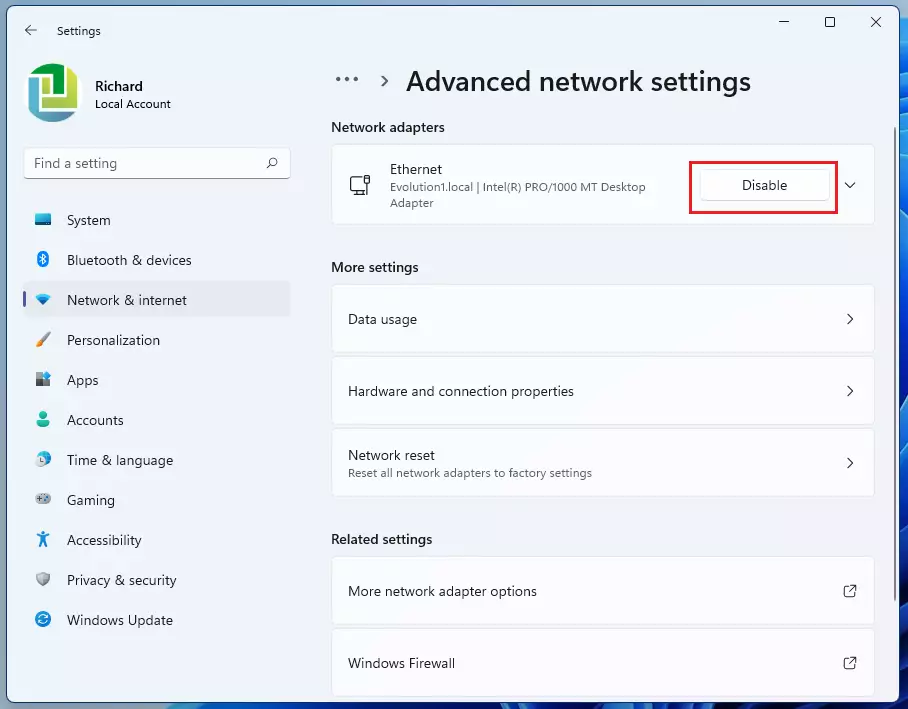
That should do it. You can now exit the Settings app.
How to disable or enable a network adapter in Windows 11 via Control Panel
One can also use the Control Panel to turn on or off a network adapter in Windows 11. Go to the Start button to use the Control Panel, then search for Control Panel. Under Best match, select the Control Panel app to open.
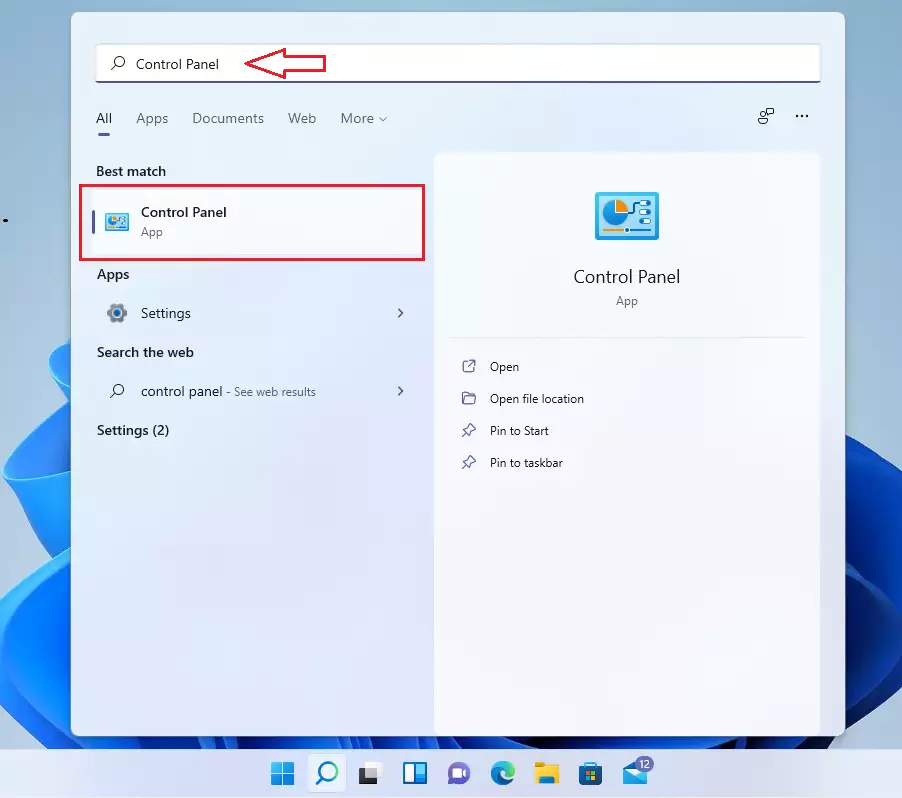
Go to Network and Internet > Network and Sharing Center > Change adapter settings in the Control Panel app.

In the Network Connections window, right-click the adapter you want to disable. Then select Disable on the context menu.
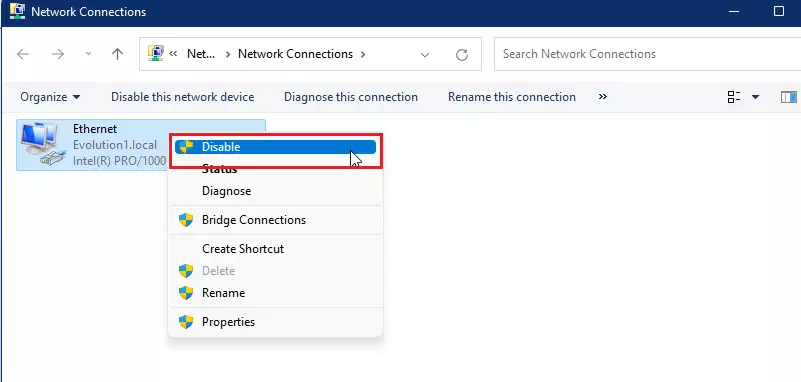
How to disable or enable a network adapter in Windows 11 via Device Manager
Users can also use the Device Manager to turn on or off a network adapter in Windows 11. To use the Device Manager, go to the Start button, then search for Device Manager. Then, under Best match, select the Device Manager app to open.
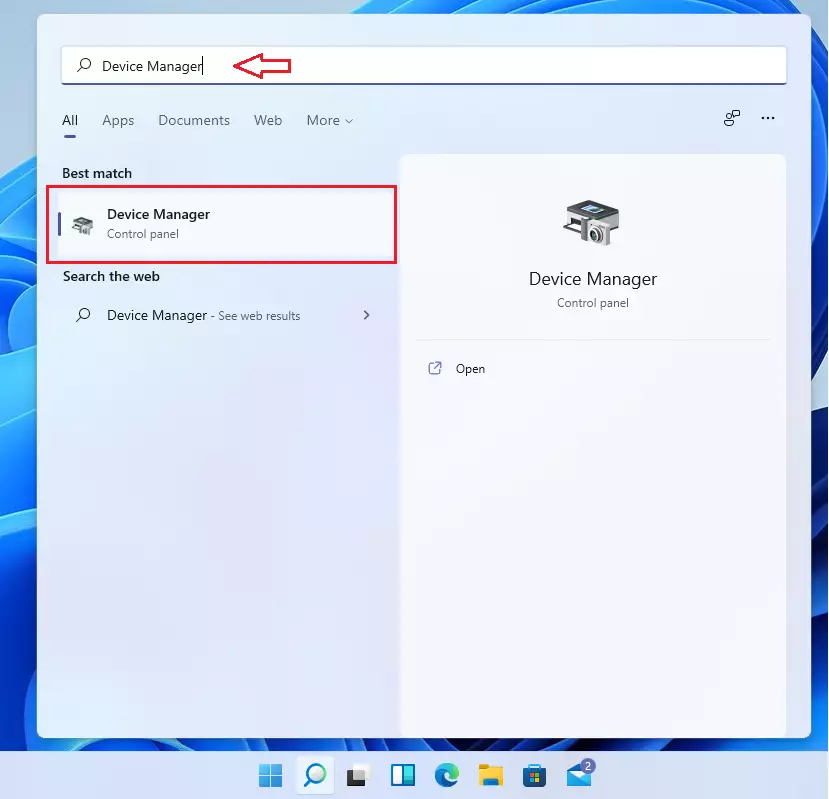
In the Device Manager app, expand the Network adapter sub-group, right-click on the adapter you want to disable and select Disable device.
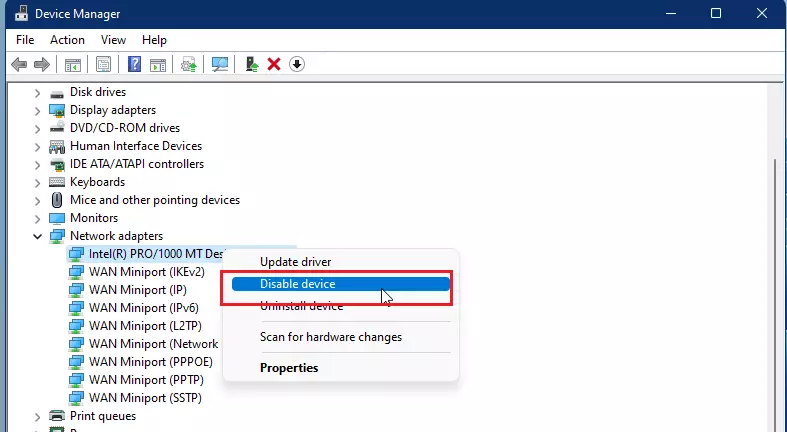
How to disable or enable a network adapter in Windows 11 via Command Prompt
Another way to disable or enable a network adapter in Windows 11 is to use the Command Prompt. To use the Command Prompt, go to the Start button, then search for Command Prompt. Under Best match, right-click, select the Command Prompt app, and click Run as administrator.
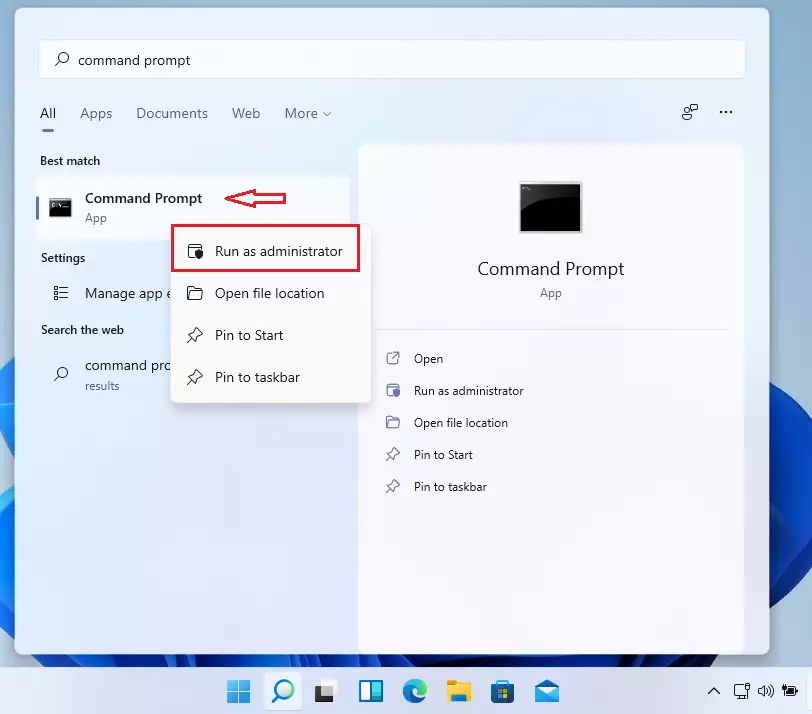
Once the Command Prompt opens, run the commands below to turn a network adapter on or off.
netsh interface set interface "Interface Name" disable netsh interface set interface "Interface Name" enable
That should do it!
Conclusion:
- Disabling a network adapter in Windows 11 is straightforward, whether using the Settings app, Control Panel, Device Manager, or Command Prompt.
- You may want to disable network adapters to enhance troubleshooting or manage multiple connections effectively.
- Ensure you know which adapter you are disabling to avoid losing internet connectivity.
- If you encounter any issues, restarting your device or enabling the adapter again can often resolve connectivity problems.
- Familiarizing yourself with these methods can improve your overall experience and efficiency in managing network connections on your Windows 11 device.

Leave a Reply Cancel reply